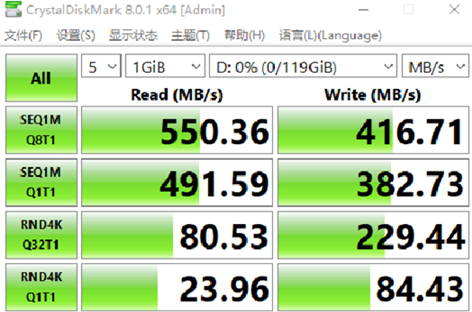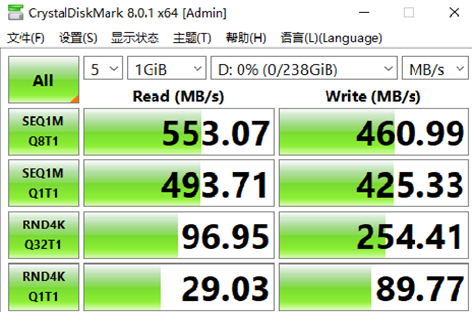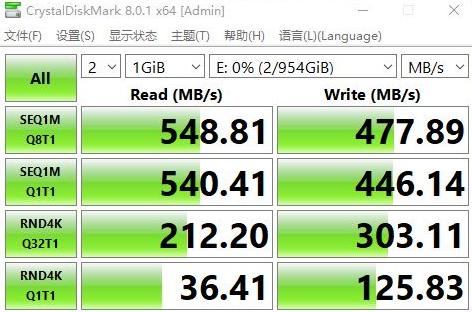M.2 NGFF SSD
64GB/128GB/256GB/512GB/1TB
- Form factor M.2 2280 and 2242
- Featuring SATA III 6Gb/s interface compatible with SATAII 3Gb/s
- Lightning-fast data transfer – up to 550MB/s read and 480MB/s write
M.2 2280 SATA III Internal SSD
SATA 3.0 (6Gb/s) M.2 2280 Solid State Drive
M.2 2280 SATA III NGFF SSD is using high-performance solid-state controller chips and high-quality NAND Flash chips. SSD M2 SATA3(6.0Gbps) lets data be read and written at a high speed, and it also supports SATAⅡ (3.0Gbps) / SATAⅠ (1.5Gbps) interface protocol. The maximum storage capacity type is M2 SATA 1TB, adapting to TLC high-capacity storage particles. And it provides users with SATA M.2 form SSD product selection in video surveillance, medical equipment, automotive electronics, rail transit, and other applications.
Capacity:


2242 Internal M.2 NGFF SATA III/6G SSD
M.2 2242 NGFF SSDs guarantee your computer is ready when you need it. Our SSDs eliminate long boot times and slow loading applications while boosting overall performance and reliability for an improved everyday user experience. These easy-to-install 42mm SATA III (6Gb/s) 2242 M.2 SSDs unleash your computer’s full potential; delivering sequential read speeds up to 550MB/s for near-instant access to files and apps when clicked, increasing productivity up to 70X with faster multitasking and gaming load times.
Capacity:
Know Before M.2 NGFF SSD Purchasing
The NGFF SSD interface is almost like the mSATA and NVMe interface. Please pay more attention to the distinction before purchasing, and try to confirm that your computer has an m.2 NGFF SATA interface so as to avoid unwanted purchasing errors.
M.2 SATA NGFF

M.2 NVMe

mSATA

What Is SATA 3 M.2 NGFF SSD?
M.2 NGFF (Next Generation Form Factor) solid state drives are space saving high-speed non-volatile storage solutions designed to boost performance with less power consumption to preserve battery life in upcoming high performance laptops.
Smaller and thinner than their mSATA counterparts, M.2 NGFF SSDs maximize performance and usage in mobile devices when used as a cache drive (in tandem with a HDD) and offer enough storage space to load an operating system as a boot drive for embedded applications, ultrabooks, and next generation notebooks.

Why Choose SSDEER.COM For M.2 NGFF SSD?
SSDeer M.2 NGFF (Next Generation Form Factor) solid state drives are space saving high-speed non-volatile storage solutions to be used in upcoming high performance laptops. Smaller, lighter, and consuming less power – M.2 drives maximize performance and usage in mobile devices when used as a cache drive (in tandem with a HDD) and offer enough storage space to load an operating system as a bootable drive for embedded applications, ultrabooks, and next generation notebooks.
With 12 years of experience, Deer Hunter is well versed in this field. Yes, you are dealing with masters. You can trust them with your needs and expectations.
Need proof? Why don’t you contact us and we can schedule a zoom inspection session for you. We do not promote physical inspection at the moment because of the COVID-19 pandemic. However, this activity will resume as soon as the pandemic is over.
- We are certified; Deer Hunter is CE and RoHS approved.
- We will ensure that we only provide you with high-quality SSD.
- Our SSDs are three year warranty supported.
- We, as a brand, are genuine in all our dealings.
- We can give you OEM/ODM service.
Want to know how we can do business? Let’s talk!
Product Parameters For M2 NGFF SATA 3 SSD
Applications
- Mainstream SSD for Tablets, Ultrabooks, Hybrid Notebooks, and Desktop PCs.
- Cost effective HDD replacement for better overall performance
Technical Specifications
Features
- Low power consumption, quiet operation and shock proof
- Sequential Read of up to 550MB/s and Write of up to 480MB/s
- Boost your laptop or PC’s performance and launch applications faster
- Ultra-compact m2 SSD goes through extensive compatibility and reliability testing
- 3-year limited warranty, you can confidently trust us for years of data storage expertise
请提供一个有效的CSV文件.
Our Advantages For M.2 SATA SSD
DH-NG M2 SATA SSD is the ideal solution for a mainstream solid state drive (SSD) upgrade from a hard disk drive (HDD). It delivers all the most sought after features at an excellent value, and is designed for an easy and cost-effective HDD replacement in the PC system to help realize faster boot times, quicker application launches and better overall system performance. With no moving parts, it is highly durable, less likely to fail, and features a 3-Year Limited Warranty.

3D NAND Flash
With 72 layers 3D NAND Flash from Intel, our M.2 SSD ensures high processing speed and stability.

Perfect for Multitasking
M.2 SSD offers high transmission speed and stable performance, which make your portable laptops and tablets perfect for multitasking. The reading speed of M.2 SATA SSD is up to 550MB/s which is approximately over three times faster than traditional HDDs.

Lightweight & Slim design
The ultra slim M.2 SSD fits with any size laptop or tablet PCs. Only 8g of ultra lightweight SSD simply elevates performance without adding a burden.

Modern Black PCB
Our M.2 SSD is completed with the touch of delicate design. Matte black PCB offers a beauty of minimalism.

Next generation M.2 SATA solid state drive
M.2 SATA solid state drive is the next generation M.2 (NGFF, Next Generation Form Factor) high speed solid state drive. It provides mobile computing devices an excellent storage performance with ultra-compact size and lightweight.
High speed transfer, high compatibility and high capacity
M.2 SATA solid state drive uses the latest SATA III 6Gb/s transfer interface and offers excellent transfer efficiency and compatibility. For different environment usage, this SSD comes in two sizes, 22x80mm and 22x42mm, and both of them are fully compliant with the M.2 specification. In addition, the capacity is increased to 1TB, which is capable of satisfying all kinds of specification requirements for motherboards, laptops, mobile devices and developing embedded devices.


Smart Response Technology
Intel Smart Response Technology is supported. M.2 SATA solid state drive allows user to set the solid state drive as the cache memory between the hard disk drive (HDD) and the computer, so the hard drive with high capacity can have a fast response time like the system of solid state drive and improves the overall working efficiency.
Comprehensive smart technology
M.2 SATA solid state drive supports advanced garbage collection, wear leveling, TRIM command and power saving function of the next generation. It provides excellent solution for performance, power efficiency and service life.

Practical Testing Gives You Original Data
- All performances are only for reference. The actual data might be influenced by different configurations, such as interface types, PC models, operating systems, testing platforms, etc.
- Some of the below listed capacities are used for formatting and other functions, not all for data storage. The actual available storage will be lower than the specification listed on the product.

128GB

256GB

512GB

1TB
请提供一个有效的CSV文件.
Notice:
- According to the international standard 1000KB=1MB ,the real capacity =Capacity x 0.93, please notice that .
- Before you use this mSATA SSD, please right click "My computer-Management-Device manager-disc drive" and can find our SSD. Please do the format and partition .
Installation Guidelines

STEP 1
Make sure you have M.2 interface on your device!

STEP 2
Insert the item into the M.2 NGFF connector.

STEP 3
Fix the screw.
FAQs About M2 NGFF SSD From Us
SATA III M.2 2280 Internal SSDs are an ideal choice for transforming the performance of any hard-drive based laptop or PC. The small M.2 2280 form factor saves space without sacrificing performance, even with limited chassis or motherboard space.
Deer Hunter has been wholesaling solid state drives for 12 years and we have encountered all kinds of problems, here are the most important concerns of our customers before business.

M.2 is an SSD form factor, designed to work with the M.2 ports on your motherboard. The original name for M.2 was Next Generation Form Factor (NGFF).
Pronounced m dot two and formerly known as the Next Generation Form Factor (NGFF), is a specification for internally mounted computer expansion cards and associated connectors. M. 2 replaces the mSATA standard, which uses the PCI Express Mini Card physical card layout and connectors.
Well, the significant difference between the M.2 2242 and M.2 2280 lies in the measurement of the SSD drives. Of course, this difference translates into further differences ahead. We will have a look at them as well.
The length of the SSD drive has a significant bearing on the performance characteristics of the SSD. Given this fact, since the M.2 2242 is smaller than the M.2 2280, the performance of the latter will be a little better placed in comparison to the M.2 2242.
Another area that the M.2 2280 takes the lead over the M.2 2242 is on the heat dissipation. The limited length of the M.2 2242 may not provide adequate heat dissipation. The M.2 2242 SSD drives are used in laptop motherboards, while the M.2 2280 drives find themselves being used in tablets.
Peripheral Component Interconnect Express (PCIe) is a high-speed expansion serial bus standard originally developed for use with graphics cards. This standard enables very fast transfer speeds between your motherboard and the PCIe SSD.
Yes, much faster. The theoretical SATA cap is around 600 MB/s. PCIe speeds generally start at 1000 MB/s and go as high as 4000 MB/s, depending on the number of channels.
M.2 is the physical form factor. SATA and PCIe are different bus standards used to communicate with the motherboard. An M.2 PCIe SSD will be much faster than an M.2 SATA SSD.
No, they are generally about the same. The only difference is form factor.
Please read your motherboard or system manufacturer documentation that came with your computer. It will inform you about the type(s) of ports available on your motherboard and thus what SSDs you can use. You cannot tell just by looking at the port.
Can I use the M.2 form factor in my computer?
Please read your motherboard or system manufacturer documentation that came with your computer. It will inform you about the type(s) of ports available on your motherboard.
DH-NG SATA III M.2 2280 SSDs are "B&M key". It will fit in a PCIe NVMe M.2 socket or a SATA III M.2 socket.
Non-Volatile Memory Express (NVMe) is a protocol designed to optimize communication with non-volatile memory media (such as NAND flash and Persistent Memory). The low latency and parallelism inherent in the protocol make NVMe SSDs the fastest in the consumer SSD market.
2280 refers to the physical dimensions of the M.2 SSD. 22 means 22mm wide while 80 means 80mm long. 2280 is the most common consumer M.2 SSD size.
Our M.2 SATA SSDs are single-sided.
No, both M.2 SATA and M.2 PCIe use drivers natively found in the operating system of your host device.
What is an SSD?
Solid State Drive. An SSD is a solid state drive that employs flash memory and used for all of your data storage needs. Compared to a traditional mechanical hard disk drive (HDD), SSDs do not have moving parts, generate less heat, use less power, and offer higher performance.
With transfer speeds far superior to mechanical hard disk drives (HDD), SSD benefits include: decreased system boot time, more efficient multi-tasking, and faster system responsiveness. SSDs offer significant performance improvements when replacing your current system’s hard drive (HDD), greater shock resistance, reduced power consumption, and longer battery life for laptop applications.
Our SSDs function independently of the host computer's operating system.
Yes, please follow the instructions provided by your OS to create a bootable system drive.
The host interface is how your SSD will connect with your host computer. Most external SSDs connect via USB or Thunderbolt III, while internal SSDs connect via SATA III or PCIe interfaces. For additional information on your host computer's host interface, please refer to the host computer's motherboard documentation.
Serial ATA. This is an interface between the SSD and the host computer. Our SSDs use the current generation SATA III, which is an 6 Gb/s backwards compatible interface. Many PCs utilize this interface as it became popular in the early 2000s and many PCs are still made with this interface today.
S.M.A.R.T., an acronym for Self-Monitoring, Analysis, and Reporting Technology, is an open standard that allows a hard disk drive to automatically detect its health and report potential failures. When a failure is recorded by S.M.A.R.T., users can choose to replace the drive to prevent unexpected outage or data loss. Moreover, S.M.A.R.T. can inform users of impending failures while there is still time to perform proactive actions, such as copy data to another device. S.M.A.R.T. is a feature of our SSDs.
Terabytes Written (TBW) is defined as the total amount of data in terabytes that can be written to a SSD before the SSD may begin to become unreliable. The SSD’s remaining life metric determines remaining SSD life span by comparing the SSD’s maximum TBW rating to actual terabytes written. Verbatim SSDs covered by this warranty have maximum TBW ratings that can be accessed on the respective product specification sheets located at www.verbatim.com. The SSD’s remaining life begins at 100% and will decrease to zero (0%) as the end user utilizes the SSD.
Mean Time Between Failures. An electronics industry metric that predicts elapsed time between inherent failures of a mechanical or electronic system, during normal system operation.
Input/Output Operations per Second. This is an industry standard metric that measures the random read/write performance of simultaneous inputs/outputs based using a 4k block size. The higher the IOPS the better the performance.
Deer Hunter offers a Limited Three Year Warranty up to the Terabytes Written (TBW) rating for our internal SSDs.
Our SSDs are intended for use in client PC applications, and are not intended for server environments.
Request A Free Quote
Or call us directly to discuss more details.
We'd like to work with you
Send us a message if you have any questions or request a quote. Our experts will give you a reply within 24 hours and help you select the right SSD you want.
- +86 13823789007
- sales@cndeerhunter.com

